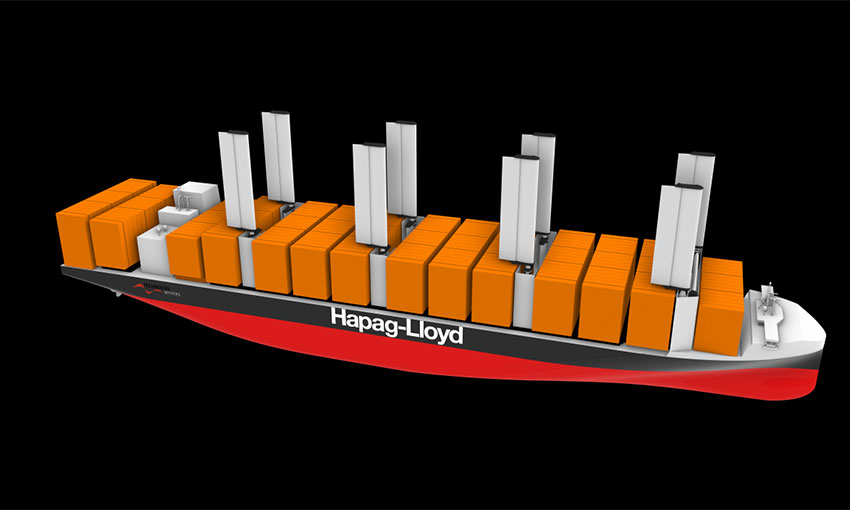SAILING ships have, for centuries, facilitated trade and allowed explorers to conquer new continents. With the drive to minimise GHG emissions from ships there is renewed interest in the development of sail-assisted and sail-only ships.
There has been much discussion about decarbonising shipping, especially now that the industry and the International Maritime Organization seem to have accepted 2050 as the deadline for reaching zero emissions. Previously the IMO had set 2050 as a target for a 50% reduction in GHG emissions only.
In the past, sails have been retrofitted to bulk carriers and tankers, but Hapag-Lloyd recently showed a concept for a new wind-assisted containership. But will this fly?
In principle, sail-assisted ships are a good idea and will assist in a small reduction of GHG emissions. However, there are several challenges that need to be addressed.
Sail-assisted or even sail-only ships, with an additional power plant, like the custom-built Canopee are proposed or already in service. The Canopee carries rocket parts from Europe to French Guiana and has four 30-metre-high sails. Japanese shipping company K-Line has such faith in sail-assisted shipping that it has purchased the company, Airseas of France, which is developing the kite sail technology. K-Line has been working with Airseas since 2019 and had previously placed orders for demonstration units as part of a possible deal to install the kite-sized sails on the bow of its bulk carriers to provide wind-assisted propulsion.
One major problem with sail-assisted and sail-only ships is that they rely heavily on suitable weather patterns. For example, the sailing ships owned by Dutch company Fairtransport sail mainly between Europe and North and Central America and rely heavily on the prevailing trade winds. Furthermore, just-in-time supply chains might have to allow for more flexibility as ships’ expected time of arrival could vary widely depending on weather conditions encountered at sea.
Another challenge is how to manage the sails when these types of ships are in port. The Hapag-Lloyd 4,500 TEU container ship concept shows the sails clear of the containers on deck, obviously to maximise the wind effect. However, when in port, ship to shore cranes, used to discharge and load the containers, might damage these structures even when folded away. To a lesser extent, but still prone to damage, are the large sails and the large wind-powered vertical rotors that we sometimes see installed on bulk carriers and tankers to assist with their conventional propulsion.
Having sails on a large ship could also cause confusion when applying the International Regulations for Preventing Collisions at Sea which states that a power-driven vessel shall keep out of the way of a sailing vessel when under sail (Rule 18). A sailing vessel using its motor is considered to be a power-driven vessel even though sails may be hoisted. In this situation the vessel should exhibit a conical shape forward where it can be best seen indicating that it is “motor sailing” (Rule 25). Normal rules of engagement between power-driven vessels apply in this case.
The China State Shipbuilding Corporation recently developed the concept of a large 24,000 TEU containership powered by a nuclear power source known as Molten Salt Reactors, which generate steam for its turbines. Currently, about 160 ships are powered by nuclear reactors, mostly naval ships and submarines.
Nuclear ships can go years without refuelling, have zero emissions and need only little space for bunkers, which allows more space for cargo. However, nuclear-powered ships might present their own problems such as not being allowed to berth at certain ports. People might not worry about the occasional nuclear-powered warship being berthed in their port but having 20, 30 or more commercial ships, some flying dubious flags of convenience, simultaneously berthed in their port might be a bridge too far.
To reach zero emissions from shipping by 2050, my money would be on ships powered by zero emissions fuels such as methanol (Maersk has just launched its first 16,000 TEU methanol powered container ship), ammonia and hydrogen as well as battery powered ships for shorter distances. Sail-assisted and sail-only ships will only contribute a very small amount to reducing GHG emissions and might not be suitable for today’s just-in-time supply chains.





